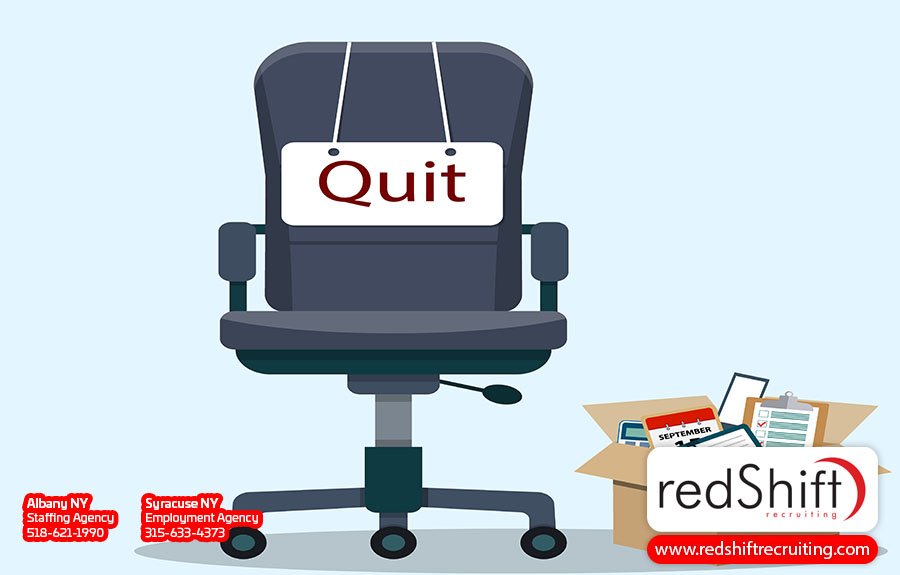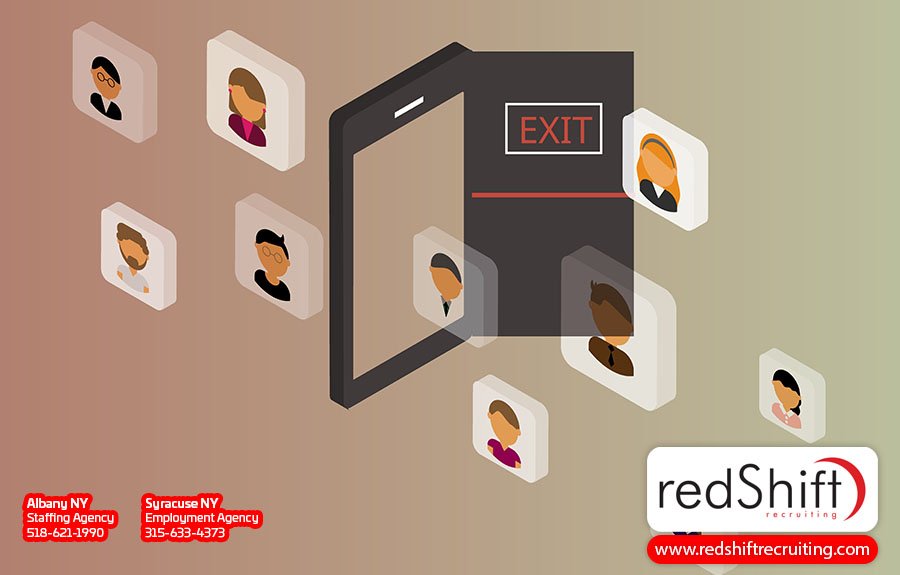How to Reduce Temporary Employee Turnover: Tips for Employers
For employers who need extra help during busy seasons, who experience a sudden surge in work, or who need coverage for an absent full-time employee, temporary workers are an excellent solution. While there are numerous benefits to hiring temporary employees, higher employee turnover rates are often one of the challenges that come with employing a temporary workforce. After all, a temporary gig isn't most people's dream job, and often temporary contractors are only looking to gain experience or earn some money while searching for a permanent position. It can be particularly frustrating when an employee agrees to stay for the duration of an assignment and then quits after a few weeks, leaving you scrambling to find and train a replacement.
So what can you do to reduce turnover rates and keep your employees happy so they'll stay until the assignment ends? Proactively taking steps to avoid and address problems and making sure employees feel appreciated and satisfied with their work is the best way to counter voluntary turnover and avoid losing valuable employees.
How Voluntary Turnover Hurts Your Business
Voluntary turnover occurs when an employee decides to quit their job, as opposed to involuntary turnover, which occurs when the company ends their employment due to poor performance or a general reduction in their workforce. A high employee turnover rate causes numerous problems and ultimately jeopardizes your company's success. First, there is the cost of hiring, from posting ads to the time your hiring managers and recruiters spend sourcing candidates, reviewing resumes, conducting interviews, and negotiating offers. Then HR professionals, supervisors, team leads, and other employees devote additional time to onboarding, training, and acclimating the new employee to the company culture. Every time an employee turns in their notice, this process has to begin again.
Ongoing turnover issues will ultimately lead to a loss of productivity as your team is constantly playing catch up, trying to get new employees up to speed while compromising their own productivity. If an employee quits soon after they've finally gotten comfortable in the role, all of that time and money has gone to waste. Once again, you're short-handed and have to start the hiring process all over again.
Furthermore, high turnover has a negative impact on employee morale. Your team may become overworked or resent having to pick up the slack for untrained or absent workers. Seeing their co-workers leave on a regular basis can also create a sense of instability and cause your team members to wonder if they too can find a better position elsewhere.
Can You Reduce Employee Turnover Rate for Temporary Positions?
The nature of temporary roles makes some turnover inevitable. People may accept temporary roles while they are still actively seeking permanent positions, are trying to get their foot in the door with a particular industry, or are looking for a job that offers a more competitive salary. Or they may need flexible work due to other responsibilities or goals that prevent them from committing to a long-term position. These workers are more likely to quit as soon as they have another job offer or their priorities change. On the other hand, some employees will accept the position because they are excited to work for your company and are eager to make connections, impress the hiring manager, or gain new skills and experience. Although you will never be able to prevent all voluntary turnover, you can reduce it by employing the right strategy. By taking steps to encourage employee engagement, implement employee feedback, and promote job satisfaction, you can build a modern workforce that feels valued and is more likely to stick around, even if their role is temporary.
Offer Competitive Pay
This may seem obvious, but too often employers neglect to research what a competitive wage actually is. Wages, along with the cost of living, are going up, and what you were offering employees a few years ago is no longer going to cut it in the current candidate market. If temporary associates keep leaving for other opportunities, it might be time to reevaluate your pay scale. Why would employees stay at your company when they could make a few dollars more per hour with your competitor?
Have a Clear Job Description
Write a job description that accurately describes your position. If you want to get the best candidates from your job post and staffing agency, you must clearly describe the responsibilities and requirements of the position to your recruiter and candidates. Don't try to make the job sound better than it is or leave out key information in an attempt to attract more candidates on job boards. If they don't know have the right information, your staffing agency will struggle to send you the best candidates, and an incomplete, unclear, or misleading job description will inevitably cause frustration for both you and the employee when they realize the job is not what they expected. If the job description isn't clear from the start, you will be more likely to hire the wrong candidate.
Promote a Respectful Company Culture
When you're working with temporary employees, it's important to show them the same respect you would full-time employees. This includes the language you use when speaking about them. Calling them "temps" may have negative connotations, or emphasis the fact that their job is only temporary. Instead, refer to them as contractors or associates, and don't make assumptions about their commitment level or ability to do the job. Make sure the entire team helps new workers feel welcome, regardless of the length of their assignment, and include them in company events, celebrations, or professional development opportunities whenever possible. If contract employees feel respected and appreciated, they are more likely to honor their commitment and finish the project or temporary period, even if they are still looking for full-time opportunities. On the other hand, if you treat them like second-class employees, they will likely to look for other work and may even quit without notice.
Provide Sufficient Training and Support
A major reason employees leave is because they feel unprepared or unsupported in their role. If a contractor feels uncertain about how to complete the task they've been given, what they should do next, or who to ask for help, they can quickly begin to feel anxious and frustrated, and eventually may decide the job isn't worth it. To avoid this, make sure you provide adequate training and support from day one.
This means more than just a tour of the workplace, an overview of your company's products or services, and a quick tutorial on using any office equipment or machinery. New employees should understand what is expected of them in their role, what the company's policies and procedures are, and whom they can go to with questions or concerns. Walk them through new tasks step-by-step and be available for questions. Clarify the parameters of the job, what tasks they are responsible for, and their daily schedule. If possible, have a full-time employee mentor and support them during their first few weeks. Follow up with them and their supervisor on a regular basis to assess areas where they need more training or to identify opportunities for them to take on new responsibilities that will make the best use of their skills. This will help them feel more at ease and fulfilled in their new role while reducing any stress they may be experiencing.
Offer Incentives
If you can't afford to pay a higher wage, incentives are great way to motivate and reward your best temporary and full-time employees. Give regular bonuses for good work or for meeting specific goals. This will improve your team's productivity while keeping morale high. Make sure employees understand the bonus system and the goals they must reach, and be transparent about the data you use to determine who has met their goal. At any point, you should be able to show them their figures and how near they are to their objective, and providing regular updates will push them to pick up the pace or show them that they are on track.
If you can't offer monetary bonuses, consider other incentives, such as a paid day off or a gift card. Get creative and come up with incentives that will appeal to your temporary employees and make them feel appreciated for their hard work.
If the job requires sales, consider paying staff a commission. Employees can be particularly motivated by commission-based pay since it allows them to earn more money based on their own performance. Again, ensure that the commission structure is straightforward and easy to comprehend, and that your commission monitoring is transparent.
Communicate with Your Staffing Agency
You're probably working with a staffing agency to fill your temporary needs. Your recruiter is your partner in the hiring process as well as the legal employer, so you should be communicating with them on a regular basis. Your recruiter can check in with the employee to identify areas of concern before they become major problems, and they can help you work out any issues the employee is having or mediate in difficult situations. There may even be some issues that employees are more comfortable discussing with their recruiter, such as problems with a supervisor or coworker.
Show Appreciation and Monitor Job Satisfaction
In addition to working closely with your staffing agency, it's also important to monitor employee satisfaction levels directly. Make sure you have a positive work environment and company culture that supports career development. Encourage regular employee feedback, whether that's through one-on-one conversations, surveys, or another method. Express appreciation and reward employees for excellent work —a little bit of recognition can go a long way towards making both salaried and hourly employees feel valued.
Offer Temp-to-Hire for Outstanding Employees
Just because an employee starts in a temporary role, doesn't mean they aren't a great long-term employee. If you have an outstanding candidate, see if there are any full-time open roles available for them. One of the main reasons employees leave temporary roles is for permanent opportunities. They are looking for stability and a long-term position where they can grow, so if you find someone who is a great fit for your company, don't waste time. Take the employee aside and let them know you want to consider them for a permanent position if they are interested. If your company is a good fit for them as well, they are much more likely to stick around if there is an opportunity to transition to a full-time role.
Be Proactive in Resolving Problems
If you notice an employee is having difficulty meeting expectations or they seem unhappy in their role, take action immediately. The sooner you can address the problem, the better. Sit down with the employee and try to identify what the issue is and come up with a solution together. If they are having difficulty with a specific task, ask if additional training would help them feel more confident and comfortable in their role. If they are unsatisfied with the position or the work environment, see if their skills may be better utilized in a different department or if you can provide any reasonable accommodations to help them be successful.
Don't Skip the Exit Interview
Don't skip the exit interview because an employee is temporary instead of permanent. Exit interviews provide valuable insight into why an employee is leaving, whether it's something that can be fixed, and what you can do to avoid losing other employees. Take time to sit down with the employee and discuss their experience with your company, or talk to your recruiter about the feedback they received from the worker. Then use that feedback to improve the work experience for future temporary (and full-time) employees.
Hire the Right People
Hiring the right people requires creating strong job postings, maintaining good communication with your staffing agency, and having an efficient and thorough interview process to assess candidates. One of the best ways to reduce employee turnover rates is to hire the right people in the first place. Work with your hiring managers and your staffing agency to create a recruiting process that will identify the best candidates for the job.
Be Proactive to Reduce Employee Turnover
The bottom line is that an effective employee retention strategy starts with hiring the right employees in the first place. But even if you do everything right, there will always be some turnover, since many employees take temporary jobs while they are looking for permanent opportunities. However, you don't want candidates to see your position as a dead-end job that they are anxious to leave as soon as they can. The key is to minimize turnover as much as possible by taking steps to keep your employees happy and engaged in their work. By following the tips above, you can do just that.
Article Author:
Ashley Meyer
Divisional Business Coordinator
Albany, NY





